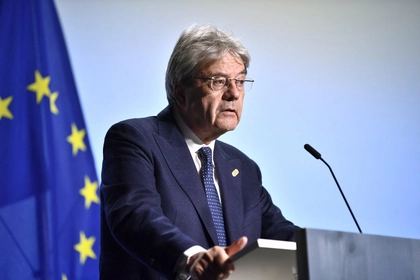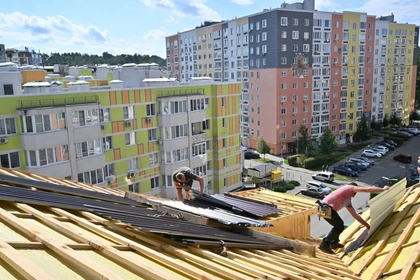Russia’s full-scale invasion of Ukraine has produced geopolitical waves that will likely ripple for years to come. Among them is a wide-ranging discussion on Ukraine’s future at top levels of Western governments, and more importantly, how to assure a successful for Ukraine.
In this context, there is growing anticipation around Ukraine’s reconstruction and a slew of questions as to how it should be structured, financed, managed, and what specific outcomes should be the focus.
JOIN US ON TELEGRAM
Follow our coverage of the war on the @Kyivpost_official.
In this two-part article, I put forward my own views as to the management of the physical infrastructure component of reconstruction. My views draw on almost 15 years of experience in engineering and construction in Ukraine, working across numerous sectors, with multi-national industrial companies and international finance institutions. and for a wide range of clients. This experience does not make me an expert on all things related to reconstruction, but it has provided me with some valuable insights that I believe are useful to share.
This first part sets out some upfront considerations, key principles of reconstruction, and what the primary management structure should look like.
Key considerations
1. The primary goal of this article is to provide some insights around the key questions currently lingering on reconstruction based on my own experience. It does not answer all questions related to reconstruction, which would be a very challenging endeavor involving a range of aspects that span well beyond the engineering and construction sectors. Rather, it attempts to provide some guidance as to how the development of infrastructure should be managed, the roles and responsibilities involved, and an effort to address some sector-specific points drawing on my knowledge of how engineering and construction work is actually carried out.

G7 Deal on $50 Billion Ukraine Loan Seen in October, Gentiloni Says
2. Among the key topics not addressed is the source of financing for reconstruction, in large part because I have little knowledge of how feasible any of the frequently proposed options are.
3. At the time of writing, there have been some developments in terms of the role that the G7, the Ukrainian government, and international donors will play in reconstruction. They may or may not fully align with my thoughts – this document outlines one way to address the core questions going forward. It is far from the only approach.
On reconstruction
The reconstruction of Ukraine, specifically the damaged and destroyed infrastructure stemming from Russia’s full-scale invasion of Ukraine beginning Feb. 24, 2022, has been discussed in varying degrees of detail since as early as April 2022 when it became clear that Russia’s initial war aims were likely non-feasible (at least by a number of military commentators).
The first public event that endeavored to detail the costs of reconstruction was the Lugano conference in June 2022, during which the Ukrainian government presented a series of plans broken down by infrastructure sector (transport, municipal infrastructure, housing, energy, etc.) complete with budgetary estimations and a phased approach to the planning and engineering steps, draft timelines, and expected outcomes.
This conference, and the associated documents presented, also put forward some important definitions and principles for reconstruction (taken from the Draft Ukraine Recovery Plan: “Construction, urban planning, modernization of cities and regions” working group):
· Rebuild better than before – the restoration and development of settlements will be based on best international practices using modern solutions and "green" technologies, which will make a significant transformational leap for communities and regions of Ukraine.
· Openness and transparency – the state will continue to provide free access for all citizens of Ukraine and international partners to the plans and actions of public authorities at all stages of Ukraine's reconstruction and development.
· European integration – fulfilling each task of the recovery plan will contribute to Ukraine's rapid rapprochement with fundamental European values and standards and the eventual acquisition of membership of the European Union (EU).
· Sustainable development – the reconstruction and development of Ukraine will be ensured, taking into account the global goals of sustainable development of the United Nations (UN).
· Energy independence – decarbonizing buildings and livelihood systems by significantly increasing their energy efficiency and increasing the share of renewable energy sources in communities will allow Ukraine to completely abandon imports of fossil fuels (including natural gas of Russian origin).
· Inclusiveness – creating and enabling an environment for equal access to opportunities for all citizens, strengthening involvement in the development of all sections of the population, and equitable distribution of material and social benefits.
· Civil protection – creating a space to ensure maximum security for the population and sustainable functioning of economic entities in emergencies, including the military.
Shortly thereafter, the World Bank put forward its own Rapid Damage and Needs Assessment, updated as of March 2023. This drew on the Lugano documents, specifically how the various infrastructure sectors should be divided, but deviates slightly in its budgetary calculations.
One key facet both sets of documents share is to draw a clear distinction between the humanitarian aid and the short-term infrastructure solutions that Ukraine needs to sustain itself during the war, and the rebuilding of infrastructure to a higher standard than previously, within the framework of Ukraine’s pre-accession EU status granted in the summer of 2022.
The working definition of reconstruction that has since been adopted is not limited to recovery, but full modernization of Ukraine’s infrastructure consistent with EU membership status. It is this definition that forms the baseline of the opinions and recommendations in this article going forward.
Primary management structure
Having established the big picture goal of what reconstruction is to achieve, it is important to address some foundational principles in establishing a management structure. Again, this document does not attempt to address where the reconstruction budget will come from. Rather, it assumes a reconstruction budget consistent with the methodology used by the World Bank document previously cited and available in open sources (note the total figure is still rising at the time of writing.
The reconstruction budget should not be treated as a war reparation
There is a temptation to view the reconstruction budget as something Ukraine is owed having been victimized by Russia’s aggression. Make no doubt, Ukraine is indeed owed war reparations. I for one hope Russia pays dearly for generations to come for the myriad of crimes against the Ukrainian people.
However, for the purposes of managing the reconstruction of Ukraine in an a-political manner, it is better to view the reconstruction budget as an investment in Ukraine’s European integration, bringing a higher standard of living to its citizens, and contributing to overall European security-very much similar to the mandate provided to the Balkan countries in line with their EU journey.
Keeping a distinction between reconstruction and war reparations serves to clarify who and how reconstruction should be managed.
Ukraine’s reconstruction should not be modeled as a giant donor project
Starting from Ukraine’s independence, numerous multilateral and bilateral donor organizations and development banks such as (but not limited to) USAID, the World Bank, the European Banks (EBRD and EIB), GIZ, the various UN groups, as well as technical assistance funds from the European Commission, have been active to varying degrees in Ukraine. These organizations all possess varying strengths and weaknesses in their operational approach to providing development support and access to financing for emerging markets like Ukraine.
From the standpoint of a management structure for reconstruction, my own recommendation would be to extract the strengths of these organizations, while attempting to avoid duplicating the weaknesses. This is not to say that the work of donor organizations is not important in the overall reconstruction of Ukraine. Elements of institutional development at all levels of public administration, economic development initiatives, and the generous lending vehicles offered by development banks will be of critical importance for the collective rebuilding of Ukraine, particularly in the context of the country’s EU membership aspirations.
Rather, I am of the opinion that the planning and development of the physical infrastructure at the speed and scale needed will require a more streamlined operational structure specific to the needs of Ukraine.
It is likely not possible or desirable to completely isolate the infrastructure component of reconstruction. Modernizing infrastructure will also involve the modernization of infrastructure management practices at all levels in Ukraine (national, regional, and municipal) – an area many large international engineering firms can contribute to.
Assuming an EU legal framework as a part of the modernization efforts will involve the incorporation of infrastructure standards new to Ukraine, and a need to accommodate facets of common EU practice such as the service structure outlined in the various FIDIC contracting models. There will be a more detailed look at aspects of reform in the engineering and construction sectors later in this article.
In part 2, we will look more closely at the stakeholders who should be involved, the role of both the management platform and Ukrainian government, and the reforms needed for engineering and construction in Ukraine.
Daniel Aspleaf, a US citizen based in Kyiv, is Managing Director of CDM Engineering Ukraine.
The views expressed are the author’s and not necessarily of Kyiv Post.
You can also highlight the text and press Ctrl + Enter






